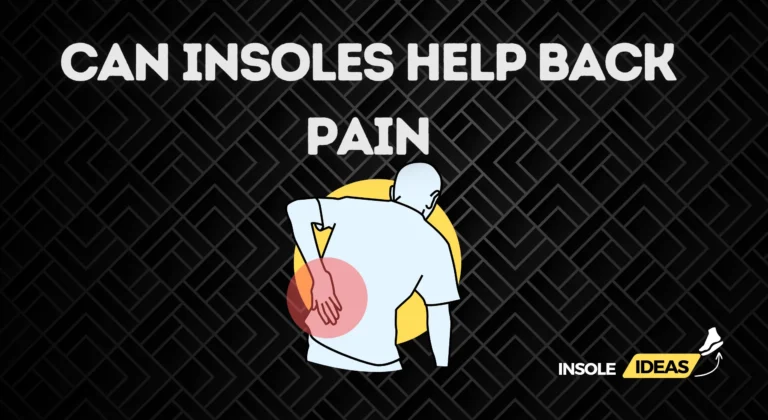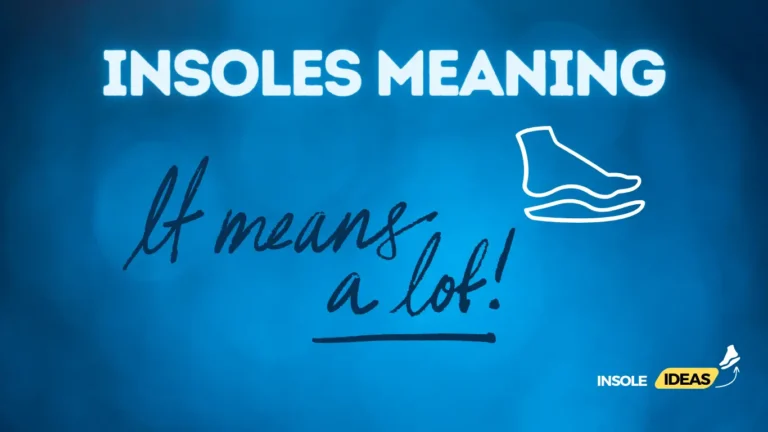Relationship Between Insole Length and Shoe Size
Insole length refers to the interior measurement of a shoe, determining the space available for the foot. Understanding shoe size measurements involves various systems like US, UK, EU, and others, each with its own metrics for sizing shoes.
Definition of Insole Length
Insole length denotes the linear measurement inside a shoe from the heel to the toe area. It’s a crucial factor in determining the right fit for footwear.
Understanding Shoe Size Measurements
Shoe sizes vary globally and are measured in different units such as inches, centimeters, or size numbers. Different regions and manufacturers might use distinct sizing standards.
Importance of Matching Insole Length to Shoe Size
Matching insole length to the correct shoe size is crucial for various reasons, including:
Comfort and Support
A proper match ensures adequate room for the foot, preventing discomfort and allowing for proper weight distribution and support.
Avoiding Foot Problems
Ill-fitting shoes due to incorrect insole length can lead to blisters, calluses, and even more serious foot issues like bunions or plantar fasciitis.
Enhancing Overall Shoe Fit
When the insole length aligns with the shoe size, the overall fit improves, ensuring better walking posture and reducing the risk of injuries.
Determining Insole Length for Different Shoe Sizes
Shoe sizing can be determined through various methods and understanding the variations across brands and regions is crucial.
Standard Sizing Charts
Different regions and manufacturers often provide sizing charts that correlate foot measurements to shoe sizes. These charts serve as a guideline for choosing the right size.
Measurement Techniques for Insole Length
Using a ruler or tape measure: This involves measuring the length of the foot from heel to toe accurately, ensuring a proper fit.
Tracing Feet for Accurate Measurements: By tracing the outline of the foot on paper and measuring the longest points, an accurate size approximation can be achieved.
Variations in Sizing Across Brands and Regions
Shoe sizing isn’t standardized universally. Variations exist across brands, countries, and even shoe types. This necessitates caution when relying solely on a specific size number without considering other factors.
Factors Influencing Insole Length and Shoe Size
Several factors contribute to the variance in insole length and shoe size requirements.
Foot Shape and Arch Type
Different foot shapes and arch types impact the space required within a shoe. For instance, individuals with high arches might need more vertical space, while wider feet require broader shoes.
Material and Construction of Shoes
The materials used and the construction of shoes influence how they conform to the feet. Flexible materials might accommodate different foot sizes better than rigid ones.
Impact of Age and Growth on Sizing
Children’s feet grow rapidly, often requiring frequent size updates. Aging can also impact foot size due to changes in muscle and tissue elasticity.
Tips for Ensuring Proper Insole Length for Shoe Size
Ensuring a proper match between insole length and shoe size involves several considerations and practices.
Trying Shoes Before Purchasing
Trying on shoes is crucial to assess the comfort and fit. Walk around, ensuring there’s ample space in the toe area and that the shoe doesn’t pinch or rub uncomfortably.
Consulting Sizing Guides and Experts
Utilize manufacturer or retailer sizing guides and seek advice from footwear specialists or podiatrists. Their expertise can offer valuable insights, especially for unique foot shapes or medical conditions.
Understanding Adjustments for Specific Footwear Types
Different types of footwear might have specific fitting nuances. Boots, sandals, athletic shoes—each may require different considerations for achieving the right insole length-to-size match.
Problems Caused by Incorrect Insole Length and Shoe Size
Wearing shoes with improper insole length compared to foot size can lead to various discomforts and even health issues.
Discomfort and Pain
Ill-fitting shoes often cause discomfort, leading to pain in various areas of the feet, ankles, or even knees due to improper alignment.
Development of Foot Conditions
Long-term wear of ill-fitting shoes can result in foot conditions like corns, calluses, bunions, or more severe issues such as hammertoes or stress fractures.
Impact on Posture and Overall Health
Poorly fitting shoes can affect posture, leading to spinal misalignment and contributing to back pain or other musculoskeletal problems.
Adjustments and Solutions for Insole Length Discrepancies
When faced with insole length discrepancies or ill-fitting shoes, there are various solutions and adjustments available.
Using Inserts or Orthotics
Inserts or orthotic devices can be inserted into shoes to provide additional support, cushioning, or to address specific foot issues like arch support or metatarsal pain.
Shoe Stretching or Modifications
Certain shoes can be stretched or modified by professionals to accommodate a better fit, especially if they’re slightly too narrow or tight in specific areas.
Seeking Professional Assistance for Customized Solutions
Footwear specialists, podiatrists, or shoe repair experts can provide customized solutions or alterations to ensure a perfect fit, especially for individuals with unique foot conditions or shapes.
Conclusion
In conclusion, the significance of matching insole length to shoe size cannot be overstated for foot health and comfort.
Importance of Matching Insole Length to Shoe Size
Achieving the right insole length-to-shoe size match is crucial to prevent discomfort, foot problems, and to ensure overall foot health.
Final Tips for Achieving Proper Fit
Always prioritize comfort and fit when selecting footwear. Consider trying on different sizes, consulting experts, and being aware of sizing variations across brands.
Significance of Foot Health and Comfort
Foot health impacts overall well-being. Prioritizing proper footwear and sizing contributes significantly to maintaining healthy feet and a comfortable gait.



